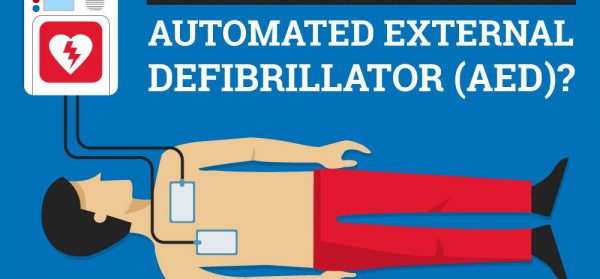
CPRNM® is a comprehensive directory designed to connect individuals and employers with top-tier training
providers including the AHA®, Red Cross®, and other training providers.*
In an emergency situation, it’s important to understand what to do to treat someone who is injured or experiencing heart attack symptoms. If you’ve been trained in CPR and First Aid, you know that treating someone in need isn’t always how it looks in the movies. There are a few CPR facts that are important to understand – and some persistent myths that just won’t go away.
1. How often does CPR actually work?
CPR, or Cardio-Pulmonary resuscitation, involves helping someone suffering from a heart attack by keeping their brain supplied with oxygen and blood pumping through their body until professional medical aid can be delivered.
There are several CPR facts that many people get incorrect, however, including how firmly you apply chest compressions and whether or not mouth-to-mouth is necessary. It involves breathing air into the sufferer’s lungs and using the heels of the hands to perform chest compressions to keep blood flowing.
CPR statistics estimate that CPR success rates will double or triple the victim’s chance of survival. One of the unfortunate CPR facts, however, is that 90 percent of those who experience out-of-hospital cardiac arrest die.
2. What is the CPR success rate from bystanders?
Bystanders – those who aren’t trained medical professionals – can have a surprisingly high CPR success rate. In fact, according to the American Heart Association’s CPR statistics, 45 percent of bystander CPR is successful.
3. Is it illegal to give CPR?
And, if I perform CPR wrong, can I get sued? This is one of the CPR facts that have a big impact on CPR success rates. Both medical professionals and laypeople wonder if they can get sued if they perform CPR and the person dies. CPR statistics for success are high enough that most people are protected under their state’s “Good Samaritan” laws for bystander intervention.
4. Can poorly performed CPR be deadly?
CPR success rates vary, as the process itself is meant for emergency situations. The person receiving CPR may stand a higher chance of surviving according to CPR statistics, although they may have a heart condition that even emergent procedures can’t successfully treat. While vigorous CPR may break the ribs or sternum, it can’t kill someone. This is one of the CPR “facts” that is untrue.
5. Will I catch HIV or AIDS from performing CPR?
Many CPR kits have mouth dams to prevent the spread of HIV and AIDS, although CPR statistics note that the transmission rates are minuscule. Chest compressions will not transmit these diseases, although if you have a cut in your mouth and the person you are administering CPR to has one as well, then there is a chance that you may become infected.
6. How do I treat nosebleeds and black eyes?
A common myth for treating nosebleeds is that you should tilt your head back. This is a myth – leaning your head back causes you to swallow blood which leads to vomiting. Instead, pinch the bridge of your nose and lean forward. Apply fresh tissues until the bleeding stops.
Black eye myths are almost as prevalent as nosebleeds. Many movies show the hero after a fight with a large raw steak pressed to his face. Putting a raw steak on your already damaged eye can expose the skin to any e.coli bacteria on the steak. Instead, apply something cold – an ice pack or a cold washcloth – to reduce the swelling and pain.
7. CPR training takes too long and the classes are hard
CPR training is intense, this is true. There’s a lot of information to process, and this very serious matter requires your full attention. However, the classes themselves can be taken in just half a day, either through your local Red Cross or online from sites like the American Heart Association. Professional training dramatically increases CPR success rates.
8. Should I rub the defibrillator paddles before using?
And, will shocking a flatlined person bring them back to life? Like some other myths, these are CPR facts that simply are not true. You won’t need to rub the paddles – this is just Hollywood dramatics. Defibrillators are actually used to stabilize a heart that is beating erratically, not to restart a heart like a battery in a car.
9. Is a tourniquet dangerous?
Tourniquets get a bad rap in the First Aid world, and may be one of the biggest areas of confusion. When tourniquets are needed to stop hemorrhaging, they’re vital. Tourniquets apply pressure to damaged veins and arteries long enough for a trained medic to repair the damage. Tourniquets have been reputed to damage limbs, so if you are in a situation where one is necessary, make sure you get to a hospital quickly.
10. Should I put butter on a burn?
Sunburns or other burns need cold and some soothing treatment like Aloe, not butter. The oil in butter will create a barrier between your skin and the air, keeping bacteria in and not allowing it to breathe, leading to infection. Instead, run the burned area under cold water or apply after-burn topical ointments.
11. What happens if I’m stung or bitten?
You may have heard there’s a technique for scraping out a bee sting, versus pulling it out. Time, however, is the key to treating bee stings, not technique.
If you’ve been stung by a jellyfish, you may have heard that you should pee on the burn. This myth arose due to the fact that urine is sometimes acidic, which can stop the damage caused by jellyfish venom. Vinegar, however, is always acidic and is a better option for jellyfish stings.
If you’ve been bitten by a snake, the general consensus was to suck out the venom before it spreads. This is a myth – the venom begins moving through your body quickly – it’s not simply sitting at the wound site waiting to be removed. If you or someone with you has been bitten, seek immediate medical attention and be aware that you may have to administer CPR.
12. Do I give a seizure victim something to bite on?
If someone is having a seizure, many people think that they can swallow their tongue or bite it off. Your tongue is firmly attached in place and isn’t able to get far enough back in your throat to swallow. Seizure victims may actually bite through anything you place in their mouth, or it may get turned around and obstruct their airway. Instead of attempting to place something in a seizure victim’s mouth, keep them from hurting themselves and call for emergency medical attention.
Many health myths may have an impact on CPR success rates, so we hope these CPR facts and CPR statistics and dispelling other First Aid misconceptions keep you and your loved ones healthy and safe!
 May 13, 2019
May 13, 2019 






